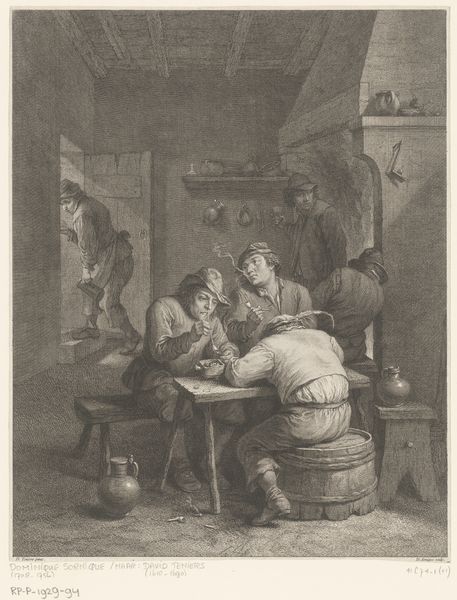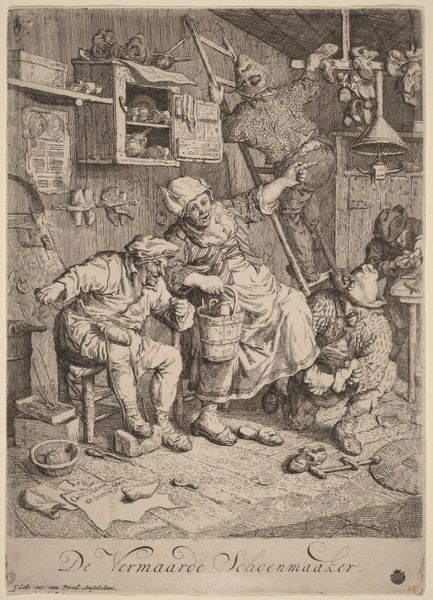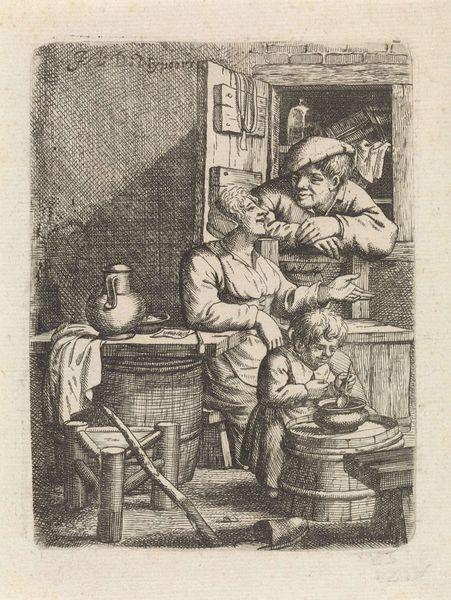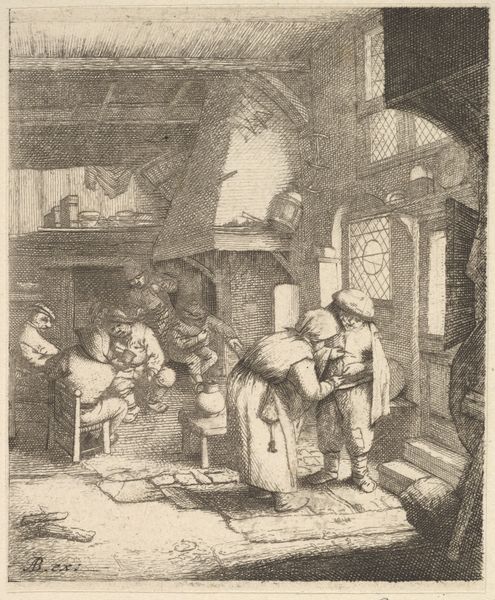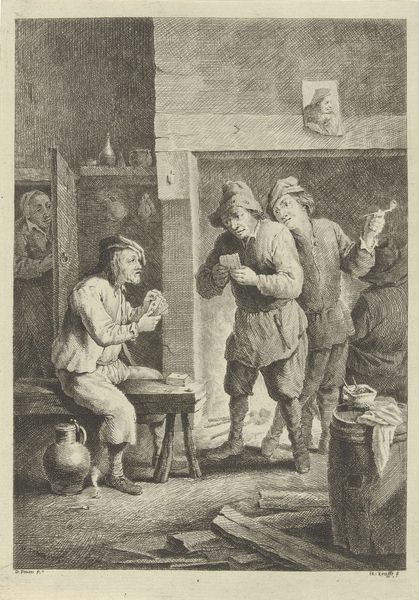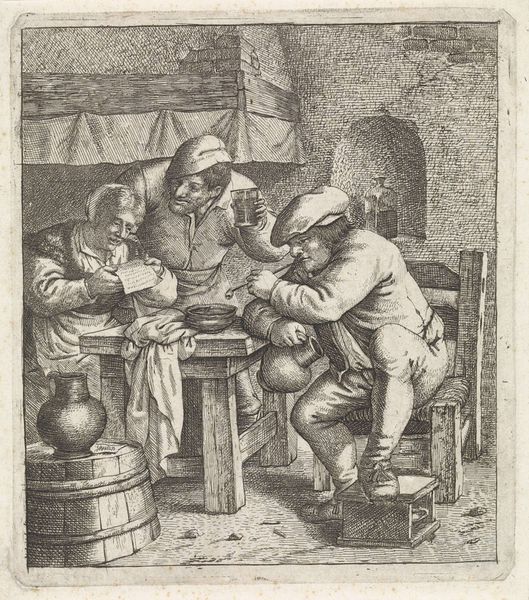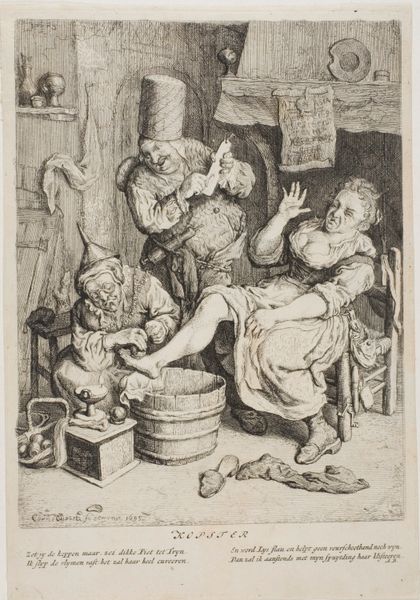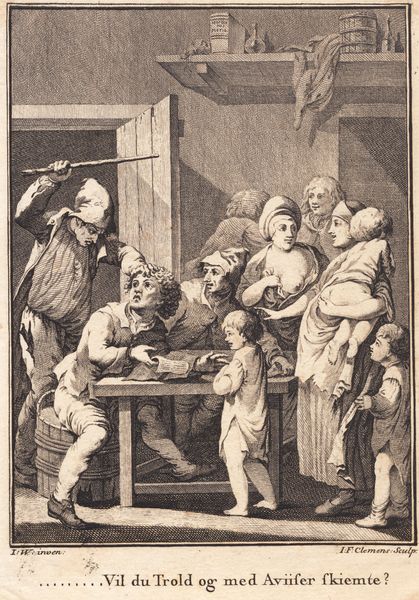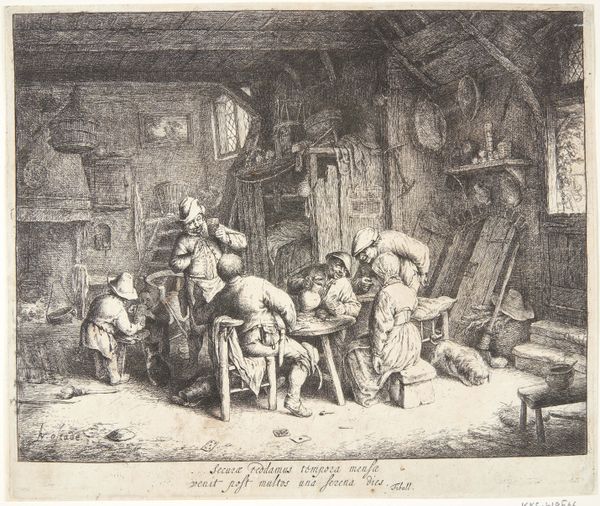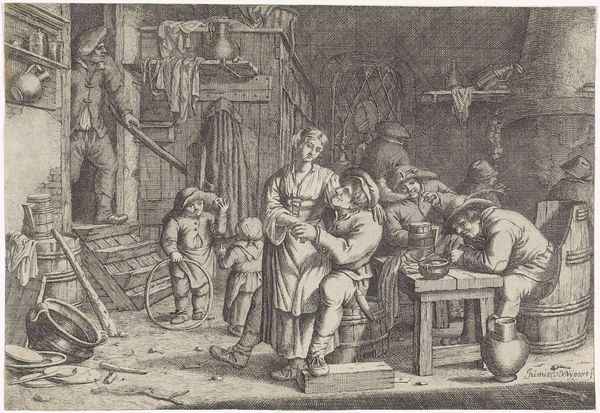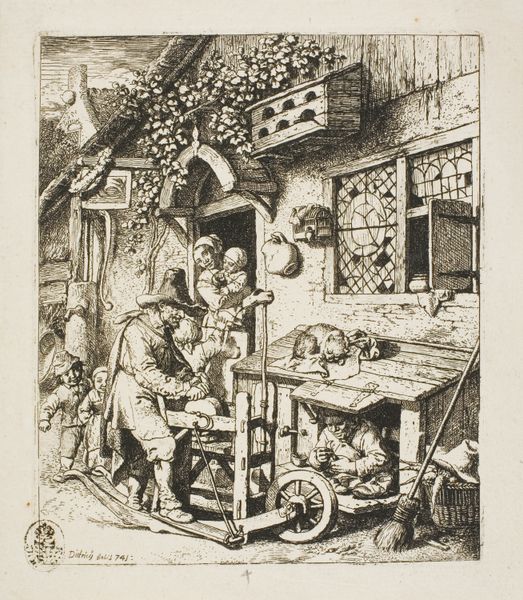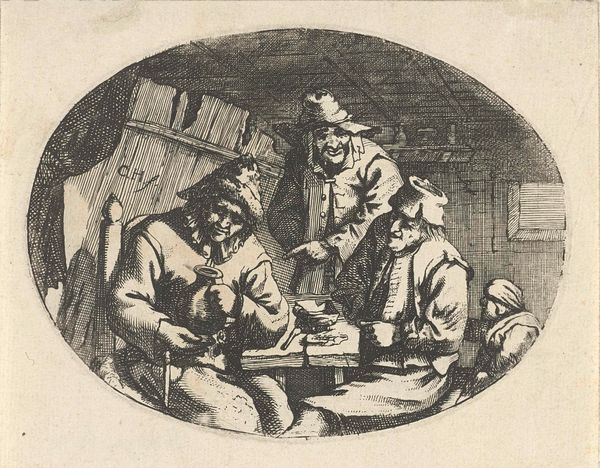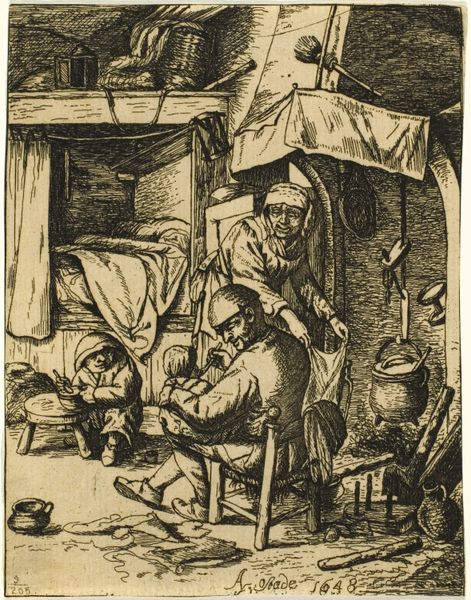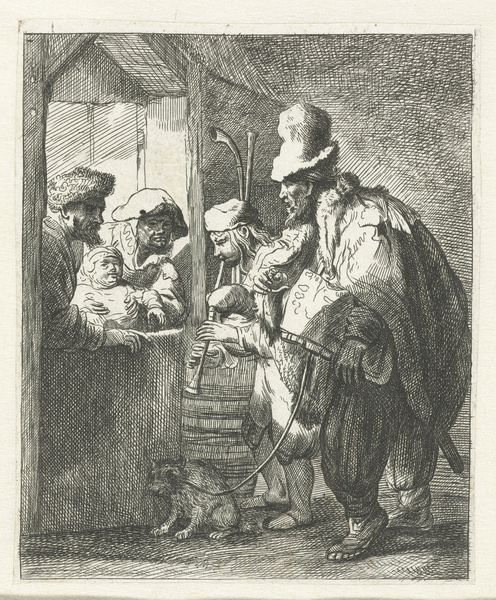
engraving
#
dutch-golden-age
#
dog
#
figuration
#
line
#
genre-painting
#
engraving
#
realism
Dimensions: height 205 mm, width 197 mm
Copyright: Rijks Museum: Open Domain
Editor: So this engraving, "Boereninterieur met een boer met een kruik in handen," or "Farmer's Interior with a Farmer Holding a Jug," made sometime between 1635 and 1692 by Justus van den Nijpoort, gives quite the glimpse into a rustic scene. It feels so detailed for an engraving! What immediately stands out to you about its composition and technique? Curator: What seizes my attention is how van den Nijpoort deploys line and light to articulate depth and form within this rather constrained space. Notice how the density of the engraved lines modulates across the surface, creating areas of stark contrast and subtle gradation. Do you observe how this technique models the figures and objects, endowing them with a tangible presence? Editor: Yes, I see what you mean. The darker lines really emphasize the shadows and give everything a three-dimensional quality, despite it being a two-dimensional medium. But why focus so much on this formal element? Curator: The engraving medium necessitates an economy of means; every line serves a structural or tonal function. This, in turn, reveals a deliberate approach to image-making. Consider, too, the orthogonals of the interior architecture, subtly receding into the picture plane, creating a coherent, albeit intimate, spatial logic. How does this ordered space influence your reading of the subject matter? Editor: I hadn't really thought about the spatial organization so much, but it does make the scene feel more… contained. The composition keeps our focus within the room, heightening the sense of everyday life. I was mostly caught up in the storytelling aspects before! Curator: Indeed. By attending to these intrinsic visual devices, one apprehends not only the artist's technical prowess but also how the artist invites our eye to roam, directing and organizing our gaze across the visual field. It encourages a more structural engagement. Editor: That makes me see it with new eyes – thank you. There’s definitely more than meets the eye at first glance when we think about line, light, and spatial relationships. Curator: Precisely. This piece illustrates the power of formal analysis in unveiling an artwork’s underlying mechanics, and consequently, new potential meanings.
Comments
No comments
Be the first to comment and join the conversation on the ultimate creative platform.
